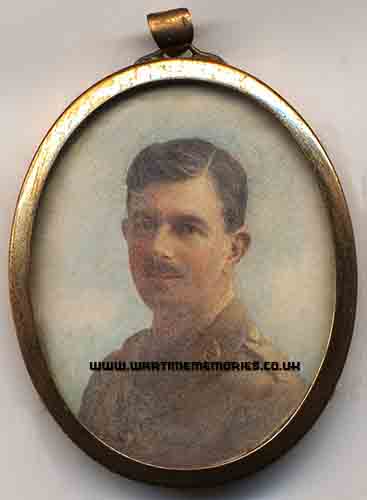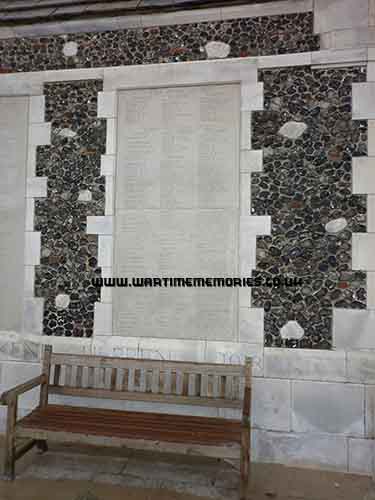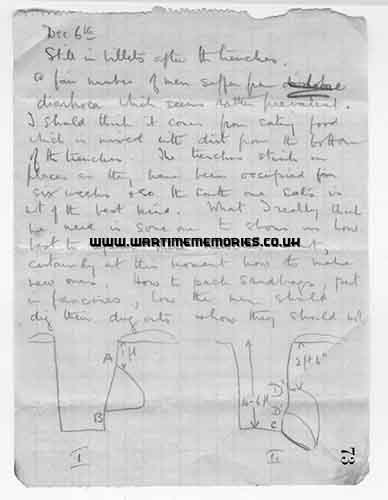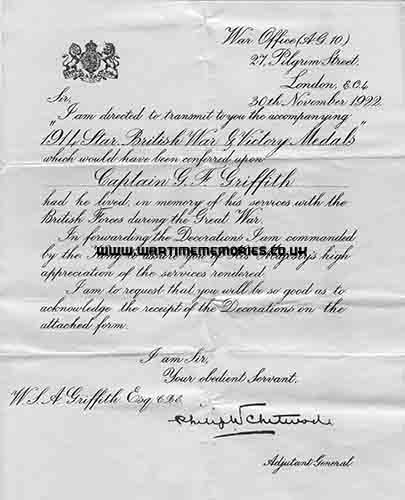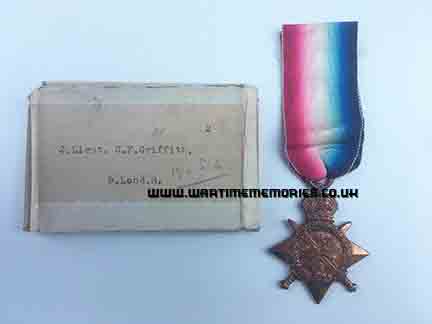Additions will be checked before being published on the website and where possible will be forwarded to the person who submitted the original entries. Your contact details will not be forwarded, but they can send a reply via this messaging system.
please scroll down to send a message
Capt. Geoffrey Foster Griffith
British Army 9th (Queen Victoria's Rifles) Battalion London Regiment
from:96 Harley Street, London
(d.26th September 1917)
My Great Uncle, Geoffrey Griffith, served with the 9th Battalion Queen Victoria's Rifles, London Regiment and lost his life at the age of twenty-six on 26th of September 1917 in the Battle of Polygon Wood, the Third Battle of Passchendaele. His body was never found. He is remembered at the Tyne Cot Cemetery in Ypres.
He was the son of Dr Walter Spencer Anderson Griffith CBE and Mary Ann Kinder of 96 Harley Street, London. She died from cancer at the end of 1915. Geoffrey's brother Harold Kinder Griffith was a Major serving on The Front with the Royal Army Medical Corps. Harold had married three months before the outbreak of WW1. He and his wife Helena went on to have six children before my grandfather signed up for service in WW2.
Geoffrey regularly wrote home and I am in possession of seven of his letters. They are either typed or in green ink or pencil. His style of writing was fairly constantly upbeat and he always noted with appreciation clothing or food parcels that had been sent out to him by family and friends. Socks and matches were essential requisites!
Letter to Geoffrey's brother Harold:-
"Dec 5th 14 (Hand written green ink and pencil)
Dear Harold
We have had our first go in the trenches. About 5 miles from our billets where we go to as soon as we come out. We have to tramp (?). The first 3 miles along a road till we come to a ruined village which the Germans shell continually and then across fields, ditches and streams wading over one's ankles in mud. Snipers the whole way up. They apparently find out where the troops move up, sight their rifles by day and fox them in a vice and fire off continually, of course in front of the trenches they aim at anyone they can see and also to make one keep one's head down. Well, we filed into the trenches after coming down a line of willows and found that theory is not always followed by practice. The trenches had been shelled the same day I adit (?), but there was practically no effective head cover, no traverses and very poor loop holes. The ground was very wet and so the bank was rather sloped, in consequence of which the trenches were about 4 ft wide in places. The idea of keeping them as narrow as possible is of course what you want but as soon as the rain comes, the banks collapse and we had to dig every night to keep ourselves protected. Our company was very lucky in that we were not shelled at all. B. Company whom we relieved rather caught it but had no casualties. Our artillery opened fire on the German trenches which were only 100 yds in front of ours so that we have an idea of what shell fire is like. We think that they keep practically no-one in their front trenches especially at night, but only snipers. It is a quaint sensation in the trenches, continual sniping at one, and the continual booming of artillery either near or far off. Food is brought up at night by orderlies to last for 24 hours. One manages to keep fairly comfortable but to keep warm is the chief difficulty especially one's feet. The trenches fill with water as soon as there is any rain and so one has to keep dry if possible. A difficult job too. As far as I can make out if the line advances each man digs himself in as fast as he can and then you convert it afterwards. That I suppose accounts for the lack of traverses as you want your fire trench as soon as possible (??). But the shere (?) practice of digging is good for the man being excellent exercise. Well, this letter is very disjointed, I am afraid, but one really gets very tired in the trenches as one is up all the night and most of the day and so you must excuse it.
I expect we shall get accustomed to it and not mind it so much in the future and then think nothing much of it. Bring out everything warm and waterproof as far as possible. I believe you have a pair of knee boots which are good for your job. We never had our kit weighed and so I do not think you need keep yours down to the 35 lbs weight. You are always billeted out here or (?) in the trenches, so you can guess what you want.
Dec 6th (Same letter)
Still in billets after the trenches. A fair number of men suffer from diarrhoea which seems rather prevalent. I should think it comes from eating food which is mixed with dirt from the bottom of the trenches. The trenches stink in places as they have been occupied for six weeks and so the earth one eats is not of the best kind. What I really think we need is someone to show us how best to repair these trenches and not, certainly at this moment how to make new ones. How to pack sandbags, put in fascines, how the men should dig their dugouts and how they should not.
In diagram I, the usual method of cutting is shown. The man starts at A and cuts out to B. This usually leaves only 1 ft of earth about to the top of the trench with the result that the whole banks falls in. You should make them start at C in diagram II and cut in about 1 ft and slightly down and then gradually work up to D1 and D2 leaving as much thickness as possible above that. The idea is that the man should sit in them and not lie in them so you can understand what sort of shape they are. Then if you have time you dig back and make dug outs where you can lie down. They are roofed in with timber and about 1 ft of earth on top, or more if possible. Our trenches are simply awful and, we've had to dig the whole time as they simply collapsed time after time, no comforts about at all. There is one thing more. All the troops out here are inundated with tobacco and cigarettes and so if you know of anyone sending things out here, get them to send chocolate, potted meats, cake, toffee etc.
Best love to you and Helena, Geoffrey"
He earned the 1914 Star, General Service Medal and Victory Medal.
Additional Information:
